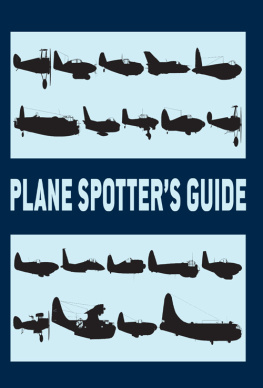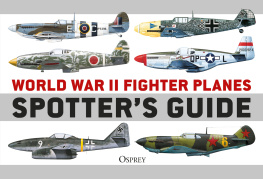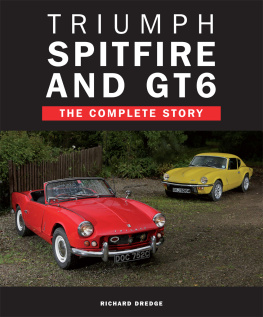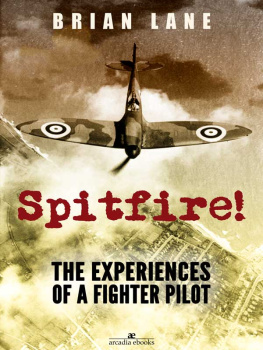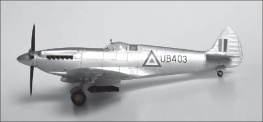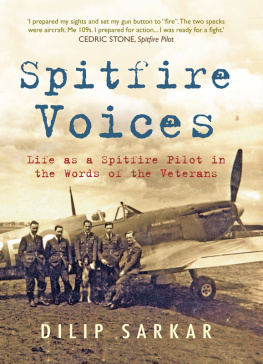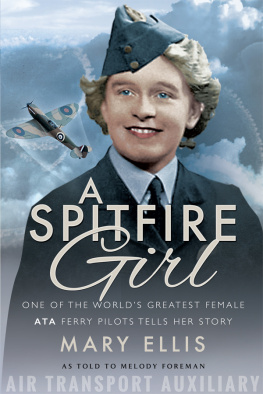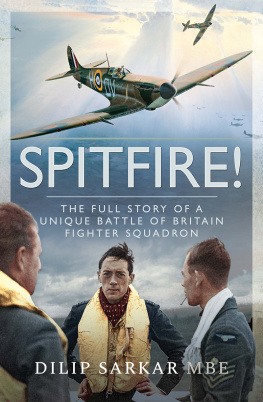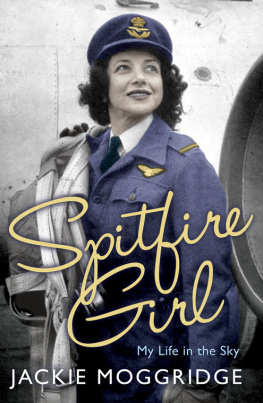Tony Holmes - Spitfire
Here you can read online Tony Holmes - Spitfire full text of the book (entire story) in english for free. Download pdf and epub, get meaning, cover and reviews about this ebook. year: 2015, publisher: Osprey Publishing, genre: Non-fiction. Description of the work, (preface) as well as reviews are available. Best literature library LitArk.com created for fans of good reading and offers a wide selection of genres:
Romance novel
Science fiction
Adventure
Detective
Science
History
Home and family
Prose
Art
Politics
Computer
Non-fiction
Religion
Business
Children
Humor
Choose a favorite category and find really read worthwhile books. Enjoy immersion in the world of imagination, feel the emotions of the characters or learn something new for yourself, make an fascinating discovery.

- Book:Spitfire
- Author:
- Publisher:Osprey Publishing
- Genre:
- Year:2015
- Rating:5 / 5
- Favourites:Add to favourites
- Your mark:
- 100
- 1
- 2
- 3
- 4
- 5
Spitfire: summary, description and annotation
We offer to read an annotation, description, summary or preface (depends on what the author of the book "Spitfire" wrote himself). If you haven't found the necessary information about the book — write in the comments, we will try to find it.
Spitfire — read online for free the complete book (whole text) full work
Below is the text of the book, divided by pages. System saving the place of the last page read, allows you to conveniently read the book "Spitfire" online for free, without having to search again every time where you left off. Put a bookmark, and you can go to the page where you finished reading at any time.
Font size:
Interval:
Bookmark:
SPITFIRE


Ground crew work on Spitfire Mk XI, PM151 of 400 Squadron RCAF at B.90 Petit Brogel, Belgium in April 1945. (Courtesy of Donald Nijboer)
SPITFIRE
TONY HOLMES

The clean and graceful lines of the Spitfire are clearly seen here as a Mk VB of No. 92 Squadron is banked for the photographer by its pilot. (Courtesy of Donald Nijboer)

Three Spitfires of No. 19 Squadron grace the skies in 1939 shortly before the outbreak of war. (IWM CH 20)
The fame of the Supermarine Spitfire is undoubtedly helped by its looks. Designed by R.J. Mitchell, the Spitfires slender fuselage, long nose, and large, elliptical wing suggested the supreme aerodynamics that it indeed delivered. Yet its aesthetics were matched by its capacity to fight, and it crucially placed Britain on an equal footing with the German, Italian, and Japanese air forces for the duration of World War II.
On 13 September 1931, the Supermarine S.6B seaplane won the Schneider Trophy outright for Britain at an average speed of 340.08mph. Looking to introduce a fighter of similar performance, the Air Ministry issued a specification for a new interceptor, against which Supermarine issued Mitchells disappointing Type 224. An ungainly monoplane with fixed undercarriage, the aircraft first flew in February 1934 and lost out to the Gloster SS.37 biplane, which became the Gladiator.
Inspired by his work on the S.6B, Mitchell set about designing a new fighter around the Rolls-Royce PV.12 engine. The Air Ministry was interested enough to draw up a new specification, F.37/34, for the aircraft, which first flew as the Type 300 on 5 March 1936; it was soon named Spitfire. Tragically, given the Spitfires subsequent history, Mitchell died the following year, but the Spitfire was developed further and entered RAF service in 1938.
A year later, Britain was at war and the Spitfire began its journey to becoming an aviation legend. Spitfires first fired their guns in anger on 6 September 1939, three days after Great Britain declared war on Germany. In fact, a technical malfunction at a radar station had caused British anti-aircraft batteries to open up on RAF aircraft, with 74 Squadrons Spitfires subsequently engaging 56 Squadrons Hurricanes in a short-lived encounter that cost two Hurricanes shot down.
Combat proper was entered on 16 October and many myths subsequently accrued around the Spitfires role in the early war years, particularly in relation to the Battle of Britain, fought in the summer of 1940. For example, the lions share of Britains fighter response in fact went to the more numerous but slower and less agile Hurricanes; at the beginning of the battle, there were 27 squadrons of Hurricanes and 19 squadrons of Spitfires. The Hurricane also provided a more stable gunnery platform. Yet what the Spitfire gave the RAF was a combat aircraft that was able to take on the German Messerschmitt Bf 109E fighters on equal terms.
The Messerschmitt may have had a slightly faster top speed, particularly at high altitudes, and a better climb rate, but in practical combat conditions the Spitfire displayed a higher rate of turn, for a smaller turning circle, which allowed a good pilot to close down into a firing position if his German opponent allowed a turning fight to develop.
Of course, Germany improved its aircraft both the Bf 109F and the Focke-Wulf Fw 190 outperformed the Spitfire when they initially appeared on the scene hence the Spitfire itself was developed through numerous variants during the war. Wing and armament configurations changed, with 20mm cannon introduced, while the fighter-bomber versions could carry bombs. The Merlin was upgraded to keep pace with airframe development and the later marks employed the more powerful Rolls-Royce Griffon engine. Through engine, airframe and wing modifications different marks, even subvariants of marks, were optimised for fighting in different ways at particular altitudes. For example, a late-war variant, the Mk XIV fighter, had a top speed of 439mph, as much as 86mph faster than a fully equipped late-production Mk I.

As the war drew to a close, late mark Spitfires were used throughout Germany on armed reconnaissance missions, such as this Spitfire XVI belonging to No. 416 Squadron. (Canadian Forces)
The Fleet Air Arm (FAA) also had its own version, known as the Seafire.
Meanwhile, the Spitfire was sold to the air forces of other nations, for example, more than 1,000 Spitfires were provided to the Soviet Union, although the type proved somewhat fragile under that countrys harsh operating conditions.
In total during the war years, 20,351 Spitfires were produced. They saw action across all theatres of the conflict, flown by the pilots of many nations Americans, Australians, Canadians, Czechs, Indians, Poles, New Zealanders and South Africans, among others. The aircraft was the making of numerous aces, including the famous No. 74 Squadron pilot Adolph Sailor Malan, whose final tally in Spitfires was 27 individual kills, seven shared kills, two unconfirmed, three probables and 16 damaged.
The excellence of the Spitfire design meant that the aircraft soldiered on around the world for at least a decade after the end of World War II, seeing combat in conflicts such as the 1947 Indo-Pakistan War and the 1948 ArabIsraeli War, while the final RAF combat sortie was flown by a PR.Mk 19 during the Malayan Emergency in 1954. Today, many examples remain airworthy, with more being restored all the time, such is the aircrafts continued popularity even in the age of hyper-sophisticated jet fighters, there is something instantly appreciable, elegant, and powerful about the Spitfire.

Seafire IIIs aboard an aircraft carrier. (Courtesy of Donald Nijboer)

The Spitfires ancestry can be traced directly to the Supermarine S 6B Schneider Trophy winner of 1931. This particular example, powered by a Rolls-Royce R engine, broke the world air speed record on 29 September 1931 when Flight Lieutenant George Stainforth reached 407.5 mph whilst at the controls. (Crown Copyright)
| 1934 | |
| Feb | R. J. Mitchells first fighter design, the Vickers-Supermarine Type 224, powered by a Rolls-Royce Goshawk, makes its maiden flight. |
| 1 Dec | The British Air Ministry issues a contract to Vickers-Supermarine for the new Mitchell-designed, Rolls-Royce PV.12-powered monoplane fighter, writing Specification F.37/34 around it; it would evolve into the Spitfire. |
| 1936 | |
| 5 Mar | F.37/34 prototype Type 300 K5054 (later christened Spitfire), powered by a Rolls-Royce Merlin C driving a two-bladed fixed pitch de Havilland propeller, makes its maiden flight from Eastleigh airfield, near Southampton. |
Font size:
Interval:
Bookmark:
Similar books «Spitfire»
Look at similar books to Spitfire. We have selected literature similar in name and meaning in the hope of providing readers with more options to find new, interesting, not yet read works.
Discussion, reviews of the book Spitfire and just readers' own opinions. Leave your comments, write what you think about the work, its meaning or the main characters. Specify what exactly you liked and what you didn't like, and why you think so.

